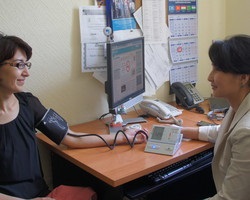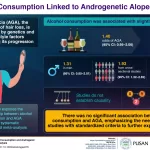In the wake of the COVID-19 pandemic, urban dwellers have become accustomed to scrubbing, sanitizing, and disinfecting every surface in sight. But while our efforts to maintain hygiene have intensified, an intriguing new study suggests we may be unintentionally reshaping the microbial ecosystems in our cities.
Scientists have discovered that city microbes are not only surviving but adapting to these artificial environments in unexpected ways. This revelation, published in Microbiome, uncovers a complex and evolving relationship between urban infrastructure, human behavior, and microbial life.
The Hidden World of Urban Microbes
“Built environments offer distinct conditions that set them apart from natural and engineered habitats,” explains Dr. Xinzhao Tong, an assistant professor at Xi’an Jiaotong-Liverpool University (XJTLU) and the lead author of the study. “Areas with many buildings are low in traditional nutrients and essential resources microbes need for survival, so these built environments have a unique microbiome.”
Dr. Tong’s team conducted a detailed census of urban microbes by collecting 738 samples from a variety of environments in Hong Kong, including homes, subways, public facilities, and even human skin. Their analysis revealed 363 previously unknown microbial strains, many of which had evolved the ability to survive by feeding on chemicals and cleaning agents found in city environments.
City Microbes Adapt to Cleaning Products
One of the more surprising findings was the discovery of a resilient strain of Eremiobacterota, originally found in the deserts of Antarctica, now thriving in Hong Kong. This strain has developed the ability to metabolize ammonium ions found in common cleaning products and even possesses genes to break down alcohol residues left by disinfectants.
“Microbes with enhanced capabilities to utilize limited resources and tolerate manufactured products, such as disinfectants, out-compete non-resistant strains, enhancing their survival and even evolution within built environments,” said Dr. Tong. This ability to adapt raises potential concerns, as these resistant microbes could pose health risks if they evolve pathogenic characteristics.
Microbial Diversity and Human Health
While some urban microbes are harmless, others could have implications for human health. The study identified 11 unique strains of Micrococcus luteus, a bacterium that is generally benign but can cause infections in individuals with weakened immune systems.
Interestingly, not all microbes are taking an antagonistic approach to survival. The researchers found a strain of Patescibacteria, commonly known as “nanobacteria,” which has evolved to live symbiotically with humans. This strain, recovered from human skin, produces antioxidant compounds that benefit human health, suggesting a possible mutualistic relationship.
The Dynamic Nature of Urban Microbial Ecosystems
The study reveals that urban environments serve as both battlegrounds and laboratories for microbes, where genetic exchanges occur in response to external pressures like cleaning agents and pollutants. Understanding these complex interactions is key to anticipating how microbial communities may evolve and impact public health.
“The cityscape acts as both an orchestra and a battleground where genetic exchanges enhance survival capabilities amidst diverse conditions,” Dr. Tong noted. This insight could help inform public health strategies, especially in understanding how microbes might influence the spread of disease in densely populated areas.
Future Directions for Research
Despite the study’s groundbreaking findings, many questions remain. Dr. Tong and her team are calling for more interdisciplinary research that bridges microbiology, urban planning, and public health. This holistic approach could lead to new strategies for managing the urban microbiome in ways that benefit both human health and environmental sustainability.
As scientists continue to explore the unseen world of city microbes, the potential to harness these microorganisms for better health outcomes grows. The team is now focusing on how resistance to disinfectants evolves in hospital settings, with the goal of improving infection control measures.
This research not only enhances our understanding of microbial ecology but also holds the promise of creating healthier, more harmonious urban environments where humans and microbes can coexist in balance.











